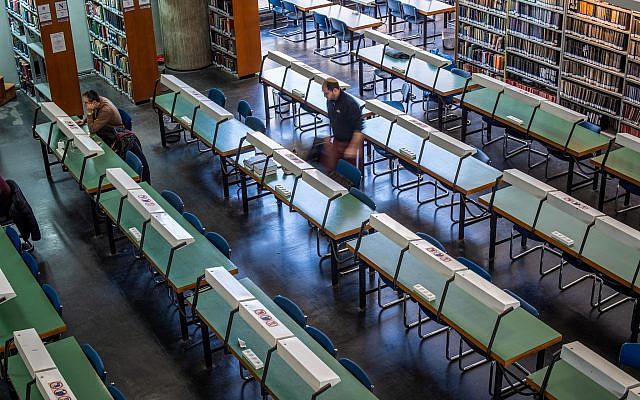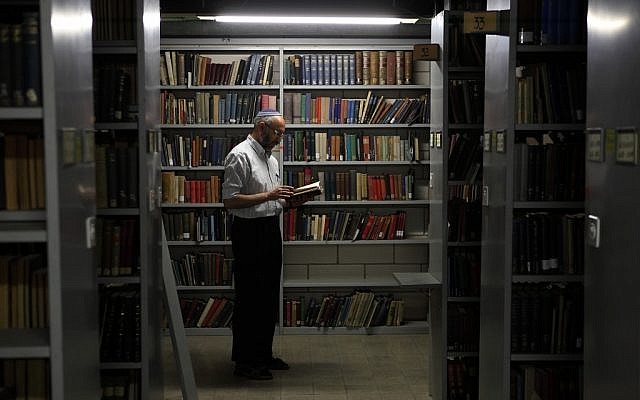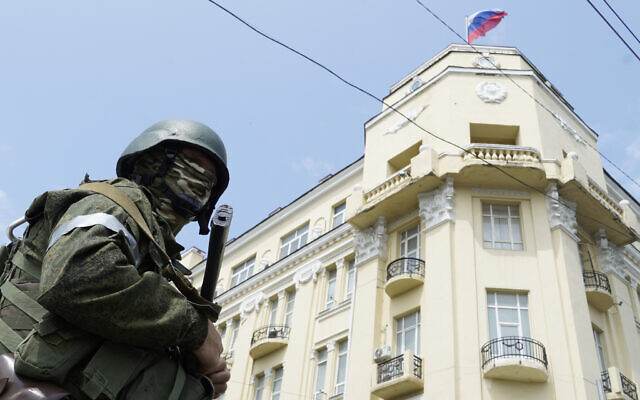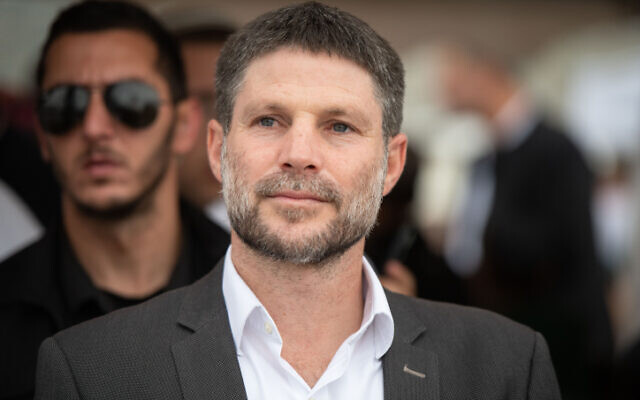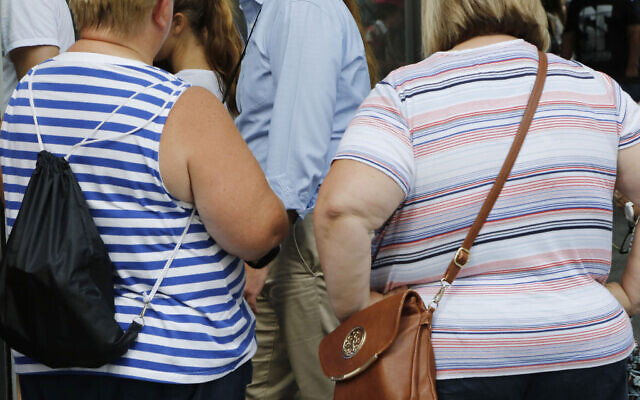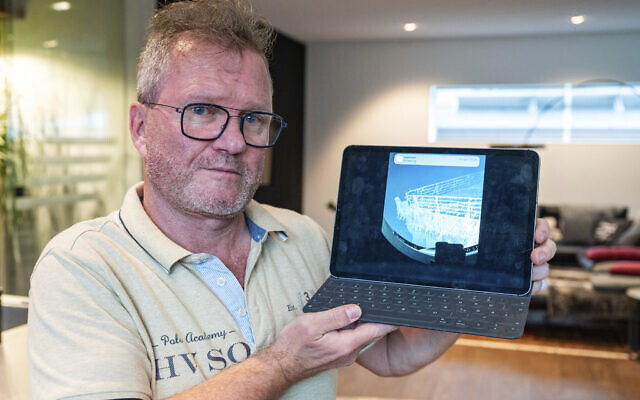Closing chapter, National Library holds last hurrah in Hebrew U jewel it called home
Epilogue event sees tours, talks, concerts, and more fill stacks and reading rooms throughout building that marked major architectural milestone when it opened in 1960
Jessica Steinberg covers the Sabra scene from south to north and back to the center.
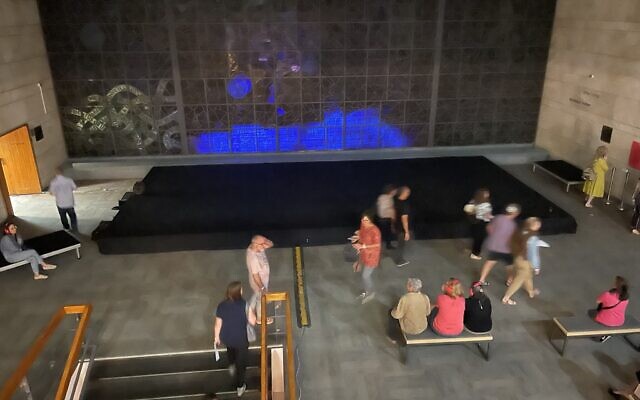
An official opening date for the National Library’s new $200 million home has yet to be publicized, but on Wednesday, the institution held a goodbye party for its soon-to-be-former abode on the Givat Ram campus of Hebrew University.
During the morning and early afternoon, faculty and staff were invited to offer their memories of the library over its 63-year history in the building, and share stories and tales about its past as part of the program, dubbed Epilogue.
The late afternoon and evening hours were devoted to art and architectural tours of the facility, followed by panels and conversations, performances and talks about books, reading, and the place the National Library campus has played in many creative lives. The night was capped by a final concert held throughout the normally silent reading rooms of the library.
Despite the bookish content, afternoon and evening events were attended by sold-out crowds.
“It’s hard to encapsulate in one day everything that we feel about this building,” said Ruty Rubinshtein, head of culture at the library, whose team spent nearly a year working on the program.
The new library building, designed by Swiss architecture firm Herzog & de Meuron, will cover 45,000 square meters (480,000 square feet), including an auditorium, a visitors center, and an outdoor amphitheater to host all kinds of cultural events.
The sweeping 10-story structure, with six floors above-ground and four below, sits some 550 meters (1,800 feet) away between the Knesset and Israel Museum.
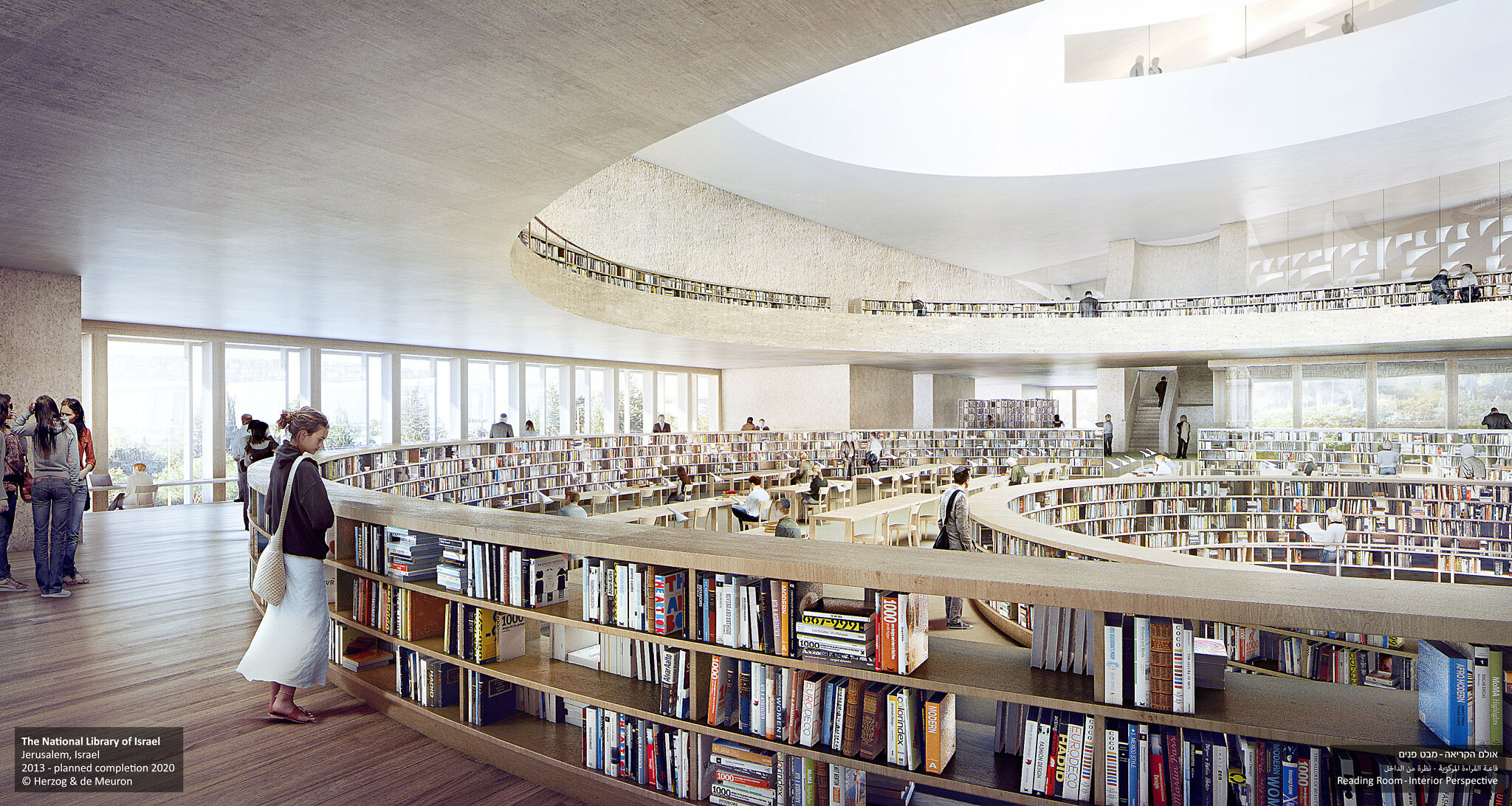
The existing six-floor library building that opened in 1960 is considered a masterpiece of Israeli architecture and a milestone in the local development of major public projects.
There was nothing of the nascent state’s previous architectural models in the library structure, no Bauhaus or eclectic architecture, nothing Eastern in nature, said architect and geographer Michael Jacobson, who led the Wednesday evening tour at the Epilogue event.
Instead, he pointed out the simple stonework, skylights and floor-to-ceiling windows in one of the reading rooms, aesthetically pleasing and utilitarian design elements that could fit anywhere.
“The architects were saying, ‘we’re part of the big world out there,'” Jacobson said. Rather than rely on designs that characterized the region until then, the library’s planners were part of a trend pushing Israeli architecture forward at the time.
Designed by architects Shulamit Nadler and Michael Nadler (a couple in both life and work), and professional partners Shmuel Bixon and Moshe Gil, the public institution had a circular central staircase, and central air conditioning and “tons of storage space,” Jacobson said.
These were “things that had never existed before in Israel,” he added. “People were living in tents at the time.”
The architects behind the library also designed the Jerusalem Theater and Tel Aviv University’s Sourasky Library, helping usher in Israel’s Brutalist period, characterized by minimalist design and bare building materials.
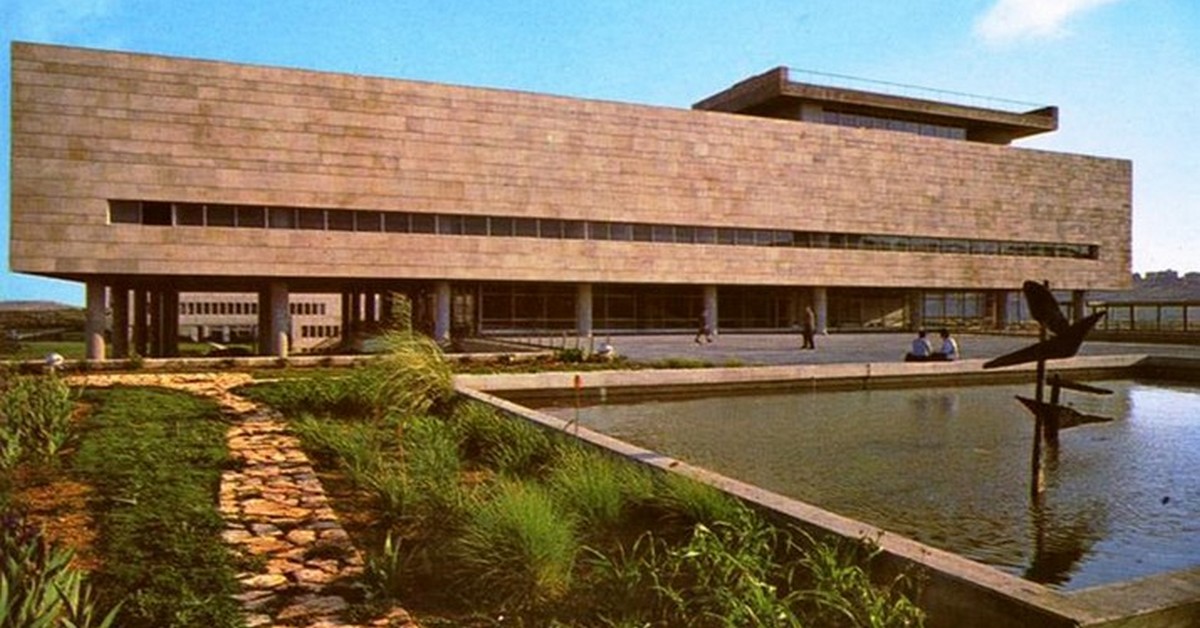
Many of the building’s touches have survived to the present day, including inner courtyards that brighten reading rooms with natural light, and green laminate tables, now augmented with power strips for cell phones and laptops.
Once the library vacates, the building will become part of Hebrew University. While its landmark status hasn’t yet been determined, there are possible plans for it to become a student center, Jacobson said.
“It’s a flexible building,” he said, pointing out the walls and columns that can be removed to create a different kind of working space. “You still need these kinds of buildings, but the needs are different.”
Throughout the evening, groups of visitors gathered in various rooms of the library to hear writers, artists, performers and thinkers speak about the books and writings that inspired them, and what role the National Library played in their own lives.
The writer Haim Baer spoke about special moments in the library that now holds his archives, about writing his works in its reading rooms and what inspired him.
The Rut Kenner theater group performed a piece based on letters, reviews, comments and complaints made by the public when the library opened six decades ago.
Visitors could also write their own memories and thoughts about the library, in a guest book set out in the lobby.
“Every book, map and artifact is moving to the new building, but this was a home for so many people for close to 60 years,” said Rubinshtein. “There are so many stories here.”

